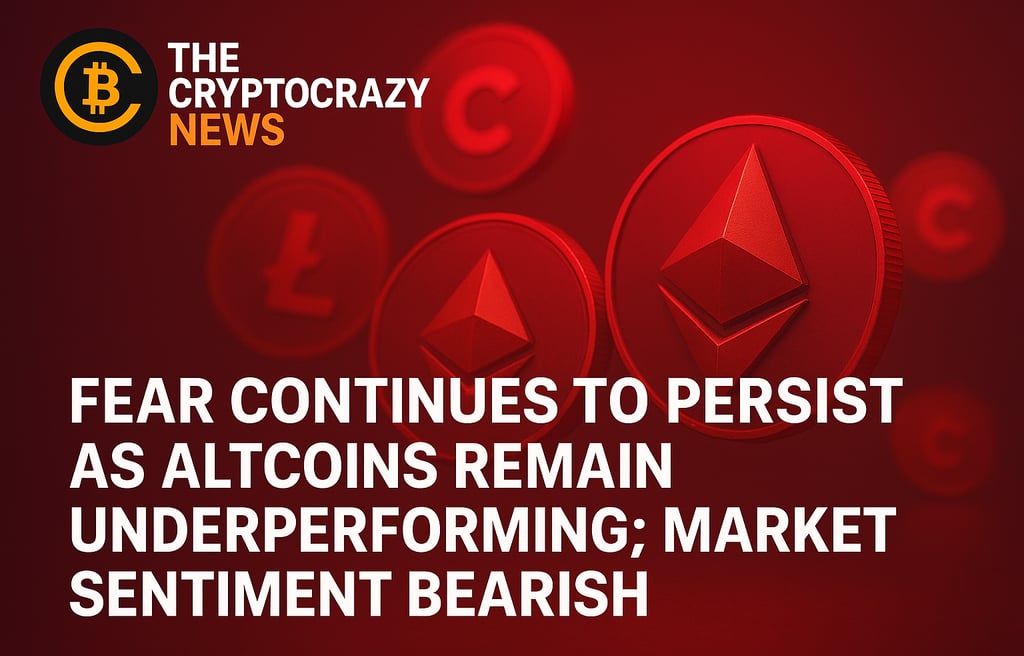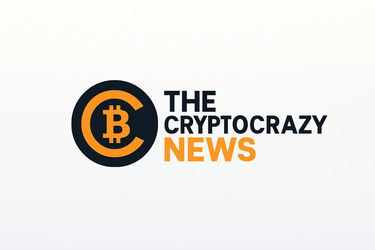Fear Continues to Persist as Altcoins Remain Underperforming; Market Sentiment Bearish
The cryptocurrency market still struggles with uncertainty as altcoins fail to recuperate from recent losses. While Bitcoin remains relatively stable above crucial support thresholds, most altcoins continue to be weighed down by intense selling pressure a sign of persistent investor fear and bearishness throughout the general market. Based on statistics from top analytics websites, volumes of popular altcoins such as Ethereum (ETH), Solana (SOL), Cardano (ADA), and Avalanche (AVAX) have fallen extensively in the last two weeks. The reduction indicates a change in market tendencies since investors seem to prefer safer digital currencies such as Bitcoin and stablecoins due to increasing macroeconomic fears.
10/21/20252 min read


Market Sentiment Remains Cautious
The most recent readings from the Crypto Fear and Greed Index reveal that sentiment has fallen back to the "fear" zone, which expresses a loss of confidence on the part of traders and institutions. Analysts attribute the situation to continuous regulatory updates, unpredictable global liquidity, and continual volatility, which is holding back altcoins from showing momentum.
The market is in consolidation mode, and investors are getting pickier," said one crypto market strategist. "Bitcoin dominance keeps increasing, which typically indicates risk appetite for altcoins is low."
Bitcoin dominance has grown over 54% in the last month alone, one of its strongest positions in 2025 — another sign that capital is rotating out of smaller crypto assets.
Altcoin Projects Confronting Fundamental Issues
While charts indicate weakness, fundamental issues within altcoin ecosystems are also highlighted by some analysts. Network usage among top Layer-1 chains has slowed, DeFi activity has decreased, and NFT volumes have remained subdued.
Polygon (MATIC) and Cardano (ADA) are among projects currently experiencing decreasing on-chain activity, while Ethereum gas charges have been moderate — a sign of weaker network usage despite recent improvements.
This shortage of utility-based demand has fueled flat or falling price action, with most altcoins some 40–60% off their annual highs.
Institutional Nervousness Puts Pressure
Institutional investors, who dominated the 2021–2023 crypto bull cycles, seem to be sitting on their hands when it comes to altcoins. While Bitcoin ETFs and Ethereum-related products continue to draw in flows, other digital assets remain pending institutional interest.
"Large-scale investors are waiting for more definitive signs before returning to the altcoin space," said a Tokyo-based crypto fund manager. "Unless regulatory systems and liquidity conditions adjust, risk assets will continue to face pressure."
Hope on the Horizon: Possible Reversal Ahead?
In spite of the weakness seen now, some market analysts think that the altcoin market may be entering the accumulation phase. Technical configurations in most leading altcoins display oversold scenarios, and that usually is a precursor to a bounce when market mood swings.
If Bitcoin finds stability and macroeconomic signals like inflation and interest rates turn better, altcoins might experience fresh buying interest over the next few months.
Historically, times of sustained fear and consolidation have tended to precede strong market recoveries, particularly when motivated by soon-to-be-released blockchain upgrades or favorable global policy shifts.
The Bottom Line
The altcoin market continues in a tenuous position as fear still grips market sentiment. Until investors feel confident and liquidity flows resume, price appreciation among prominent altcoins might continue to be restricted.
But as history has proven, crypto markets tend to come back hardest when sentiment is most bearish — and for long-term investors, this decline may ultimately prove to be a strategic accumulation opportunity.
